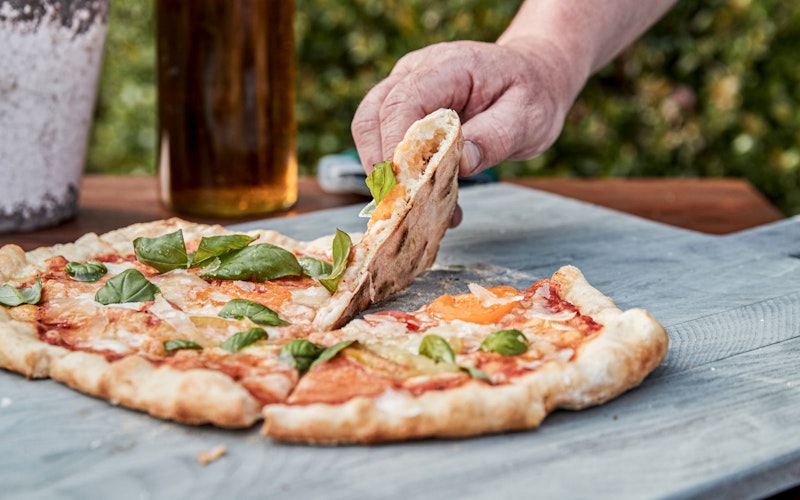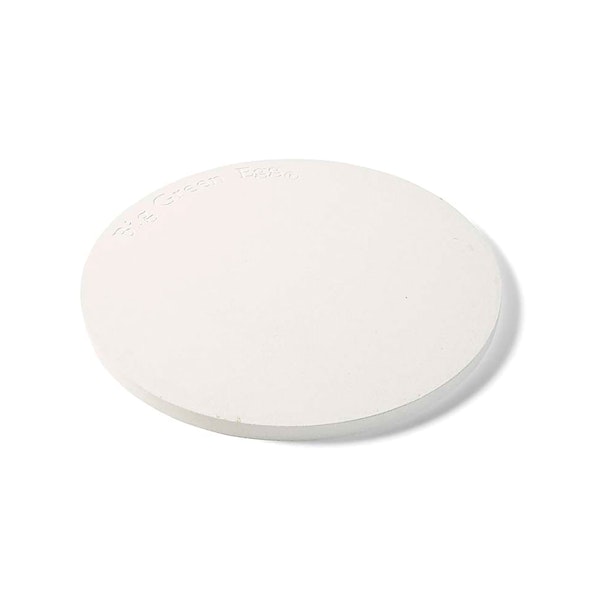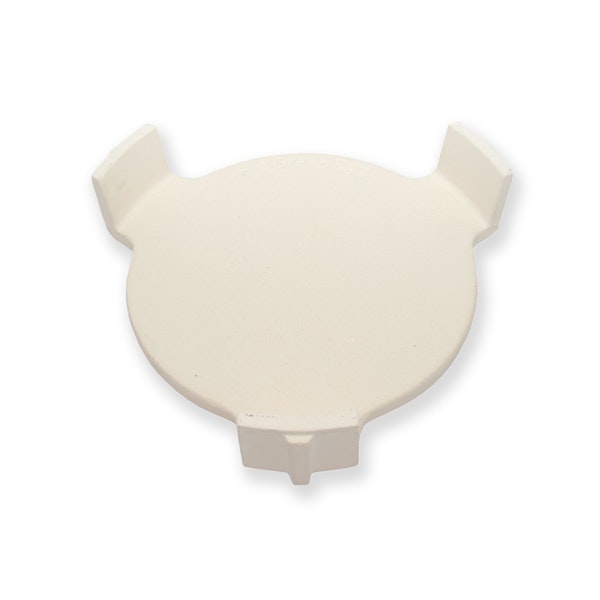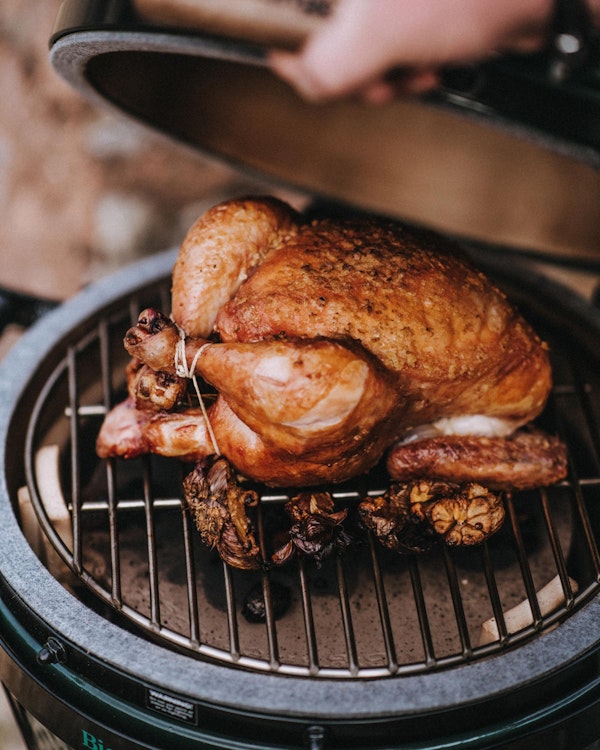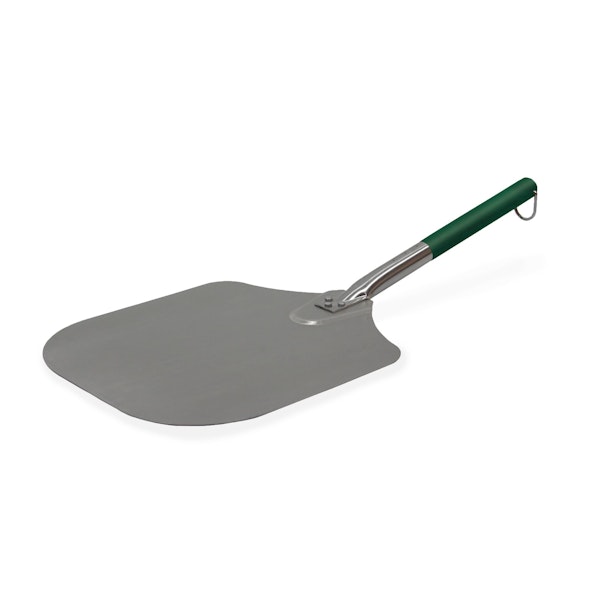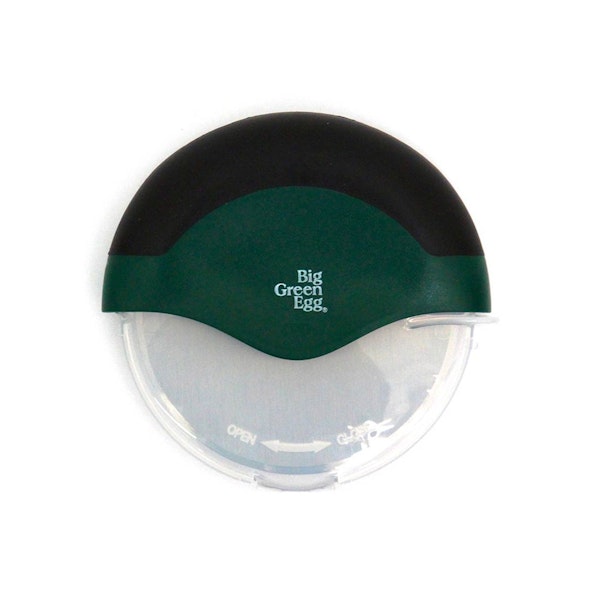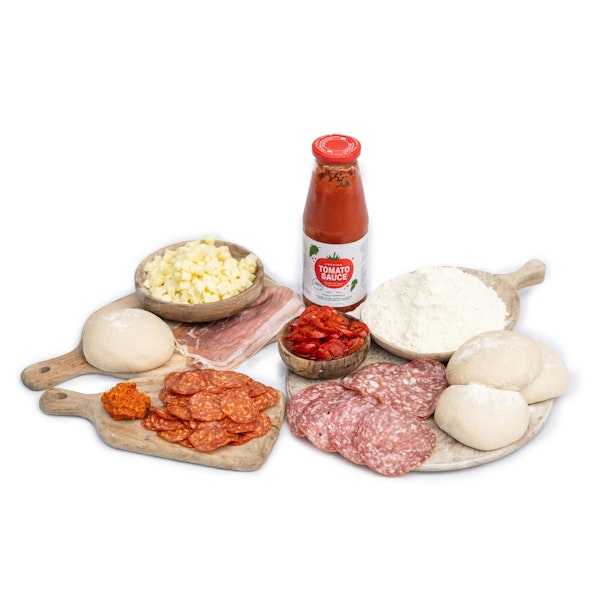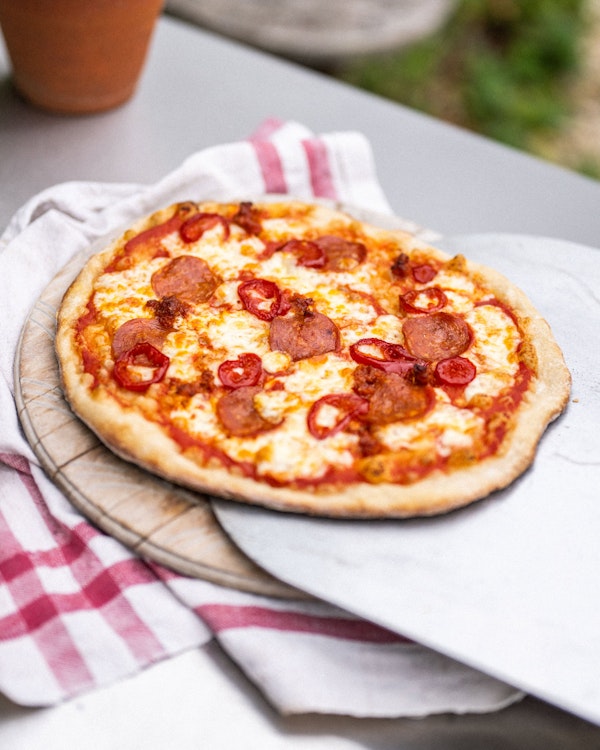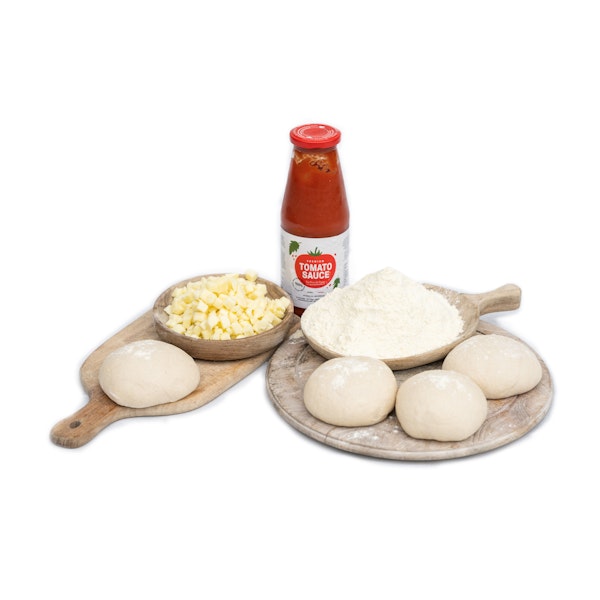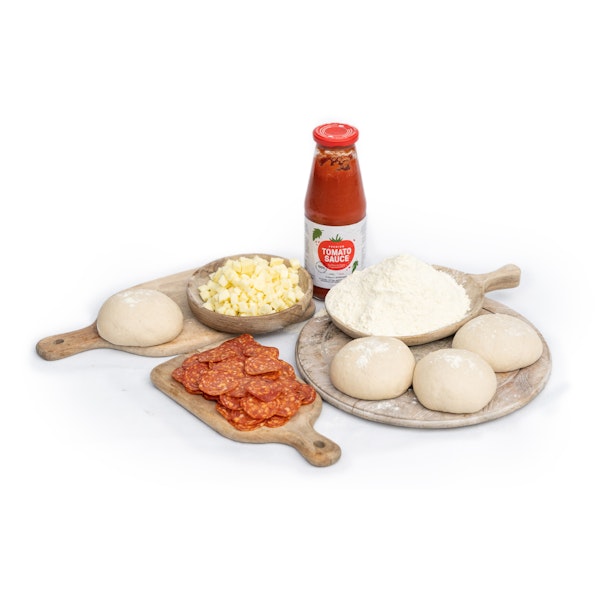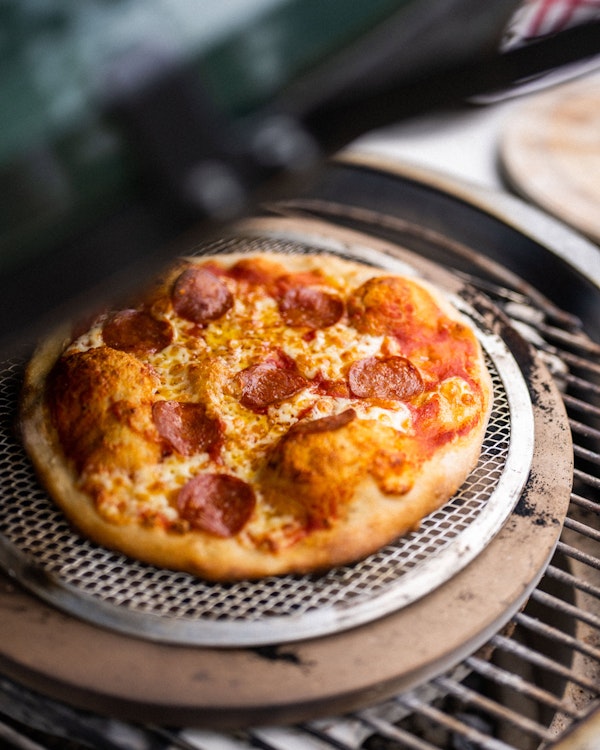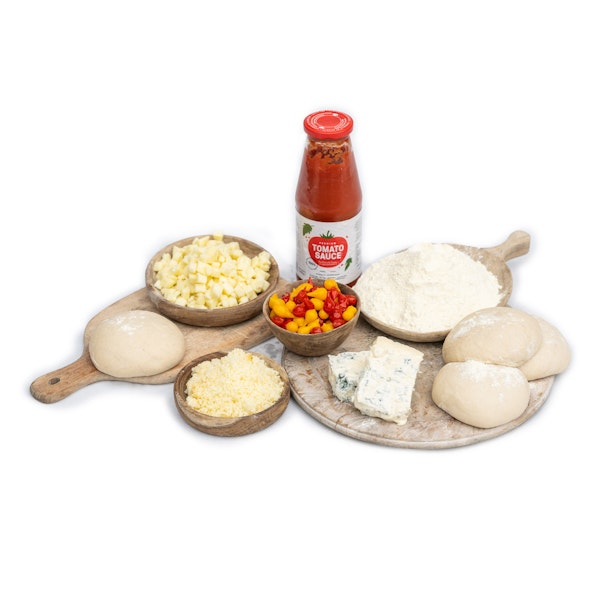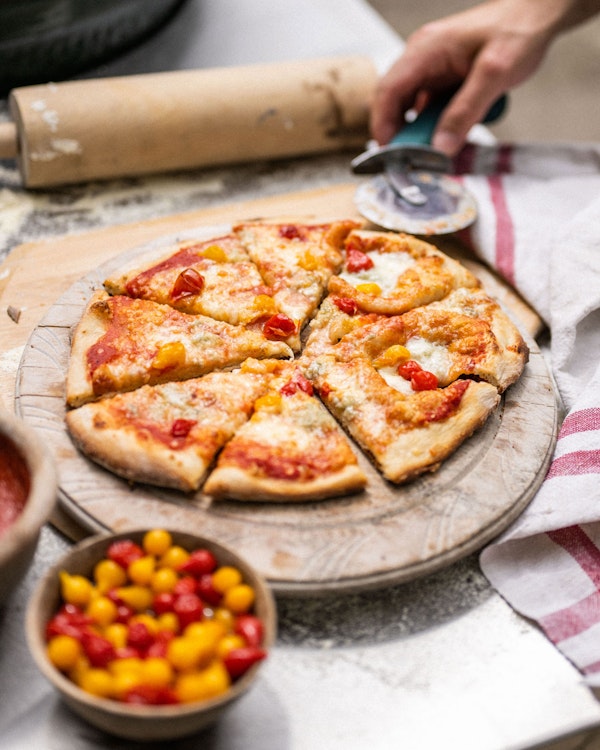Overview
Brothers Thom & James Elliot are the masterminds behind Pizza Pilgrims, the acclaimed chain of pizzerias in London and Oxford. While it's their Neapolitan pizzas that made their name, they are now almost as famous for their ready-to-prepare Pizza in the Post home kits. These were originally conceived for domestic kitchens but are brought to a whole new level on the EGG. If you fancy cutting out the middle man and having a go at making them yourself, they’ve been kind enough to share the recipe.
Make the dough
Tip a mountain of flour onto a clean work surface and use your fist to make a dip well in the centre, exposting the countertop below.
Crumble the yeast into the tepid water. Mix until the yeast has has dissolved then pour a third into your flour crater. Use your fingertips to mix the liquid, slowly bringing the flour in from the sides. Keep dragging more flour into the mix until you reach the consistency of porridge, then add a bit more water. Don’t let mixture get too thick; if it starts to form a dough too soon it becomes difficult to incorporate the rest of the water. Continue this process until all the water is used up.
Sprinkle the salt over the mixture while it’s wet to ensure it dissolves. Use both hands to push the remaining flour from the outside into the middle. Fold and press the mix until all the flour is absorbed and a dough comes together. Work the gluten by kneading the dough. Use the heel of your hand to stretch out the dough and roll it back up, while the other hand acts like an anchor. Continue this for about 8 minutes until the dough becomes smooth and glossy. It should also feel tighter and elastic.
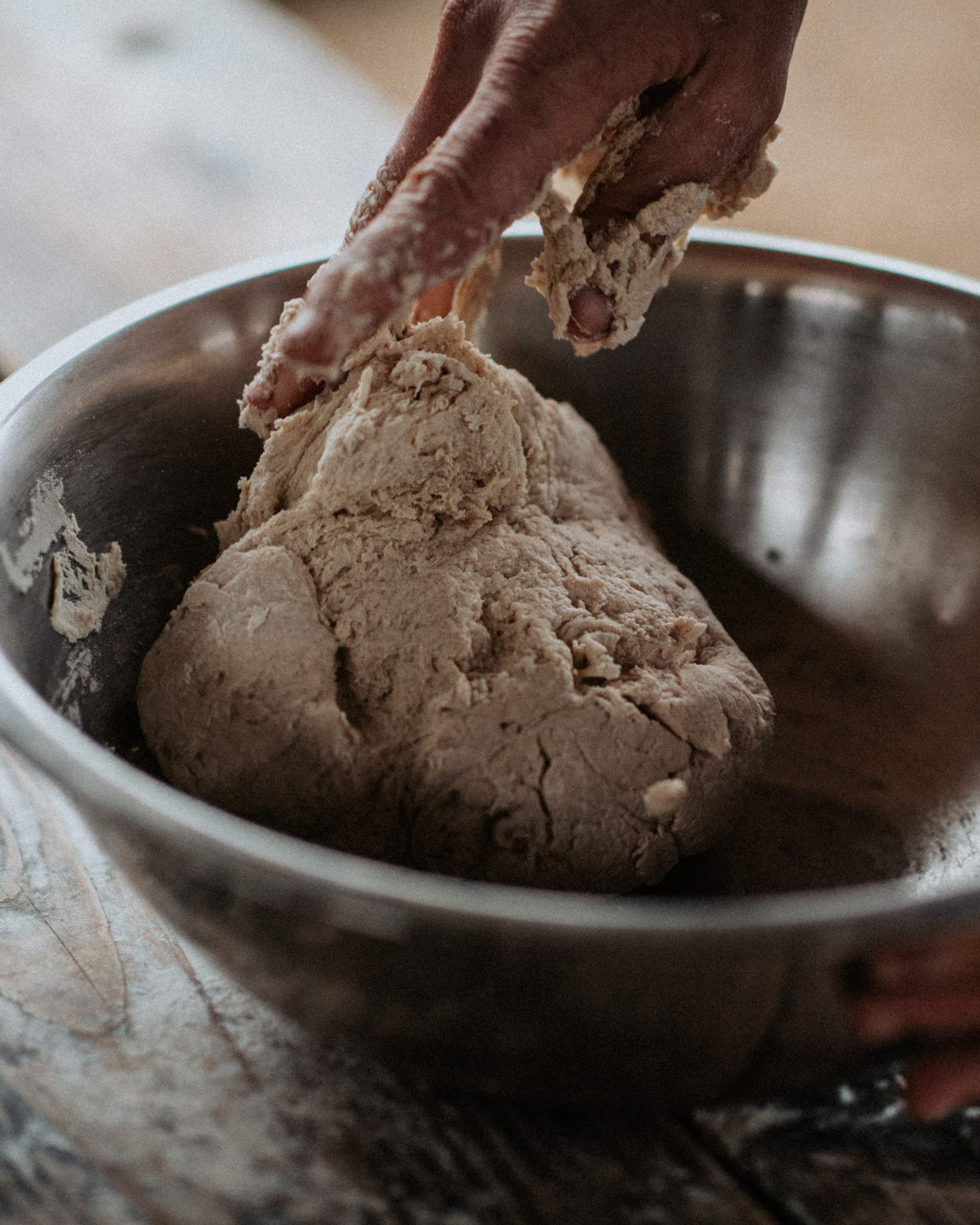
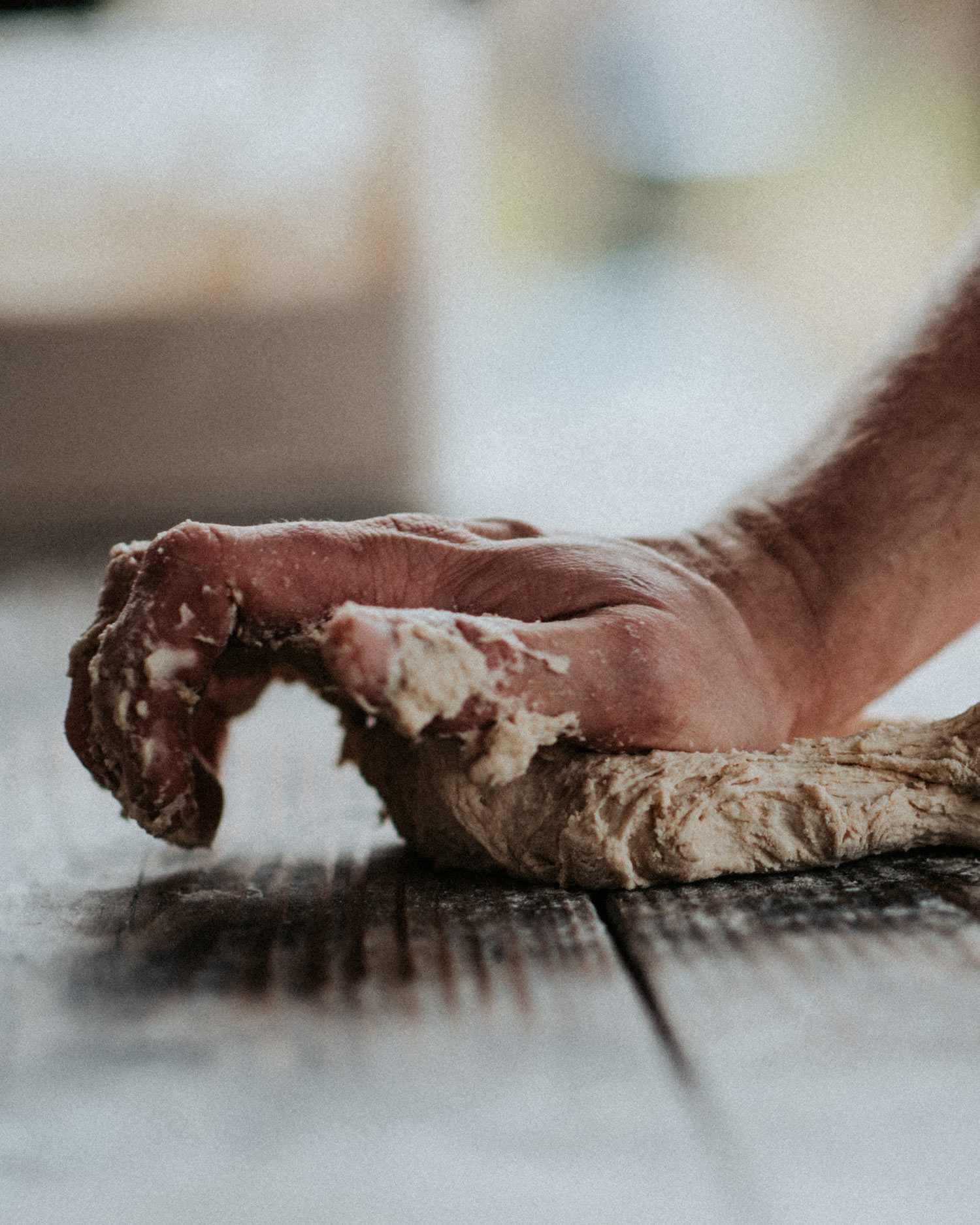
Leave the dough for 10 minutes, covering it with a damp cloth to keep from drying it out. Divide into individual balls (about 230g each). Place them on a tray about 3cm apart. Cover and leave at room temperature for approximately 6 hours until the dough expands to almost double its size, then store in the fridge overnight. The next day, remove the dough from the fridge for 1–2 hours before you plan to use it.
Set up your EGG
Set up your EGG for indirect cooking, with the ConvEGGtor legs down, a Stainless Steel Grid on top and a Baking Stone on top of that. Light your EGG, and bring the temperature up to 300˚C.
Shape the dough
Dust your work surface with semolina flour. Using your fingertips, press out the dough ball firmly, starting at the centre and working out to the edge. Ensure you leave 1cm around the rim of the pizza untouched. Turn the dough ball over and repeat the pressing out process on the other side. Try to move quickly with the dough, as it can stick to the work surface if left too long. If you’re generous with the flour and keep adding a little more as you go along, you shouldn’t end up in a sticky situation.
Take the newly flattened dough ball on the back of your hands, ensuring the weight is on your knuckles and that your fingertips and nails are not going to poke a hole in the dough.
Using the back of your hands, stretch the dough out as far as you can without tearing it. Turn the dough 90 degrees and repeat this stretching. Do this a few times.
You should now have a disc of dough around 10 inches in diameter, consistently thin but with a slightly thicker rim.
Transfer to a well-floured Aluminium Pizza Peel then get ready to add your toppings.
For the toppings
Sprinkle some parmesan on the base of your pizza then spread the passata lightly over the top, leaving a good rim around the edge. Tear the mozzarella up into small chunks and distribute evenly. Finally rip up some basil leaves and sprinkle on top.
Baking
Take care to burp your EGG, then transfer the pizza carefully onto the Baking Stone. Close the EGG dome.
After a few minutes, burp your EGG and check the cheese is melting and that the dough is blistering. Close the EGG again if it looks like it needs longer. It should take about 6 minutes for the pizza to cook, during which time you start preparing your next one.
To finish
Using the Aluminium Pizza Peel, remove the pizza from the EGG. Divide into even slices with our Ultimate Pizza Wheel and eat straight away.
Top tips
If you over-stretch your dough and it gets too thin, you can sometimes end up with small holes in your pizza base. But don’t fear, all is not lost - just squeeze these gently back together before you put any toppings on.
To avoid a soggy bottom, reduce your passata right down. We’d also recommend leaving your torn-up mozzarella out before you put it on your pizza, to reduce its moisture before it's added to your base.
A topping which is simple yet effective is ’nduja. It’s a spreadable Calabrian spicy sausage that has a really smoky flavour that brings great depth to any pizza. You can hunt this ingredient down in Italian delis. You'll find that a little goes a long way.
Whatever toppings you go for, take care not to overload your pizza. Too many toppings can make it hard to transfer your pizza from peel to Baking Stone and can cause the pizza not to cook properly. If you're looking for an even cook, less is more.
